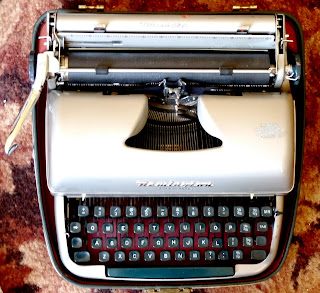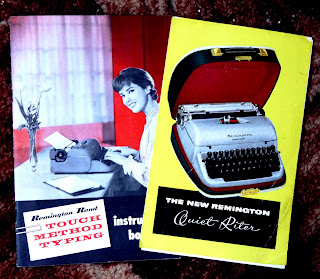 |
| A Remington portable 'Quiet-Riter'. |
 |
| Instruction booklets for the Remington Rand touch typing method and the 'Quiet-Riter'. |
The E. Remington manufacturing firm was founded in 1816 by Eliphalet Remington in llion, New York. At first the firm manufactured firearms, they were famous particularly for making rifle barrels which were known for their high quality and reasonable price. Remington supplied the U.S. Army with rifles for the Mexican-American war (1846-1848), and went on to produce breech-loading rifles and sewing machines. In 1886 E.Remington and Sons sold its typewriter company to The Standard Typewriter Company Inc., and included the rights to its name Remington Typewriter Co.
The heavy duty typewriter 'The Quiet - riter' was produced in the fifties and is famous for its miracle tab feature. Bob Dylan used a similar Remington for writing his lyrics.